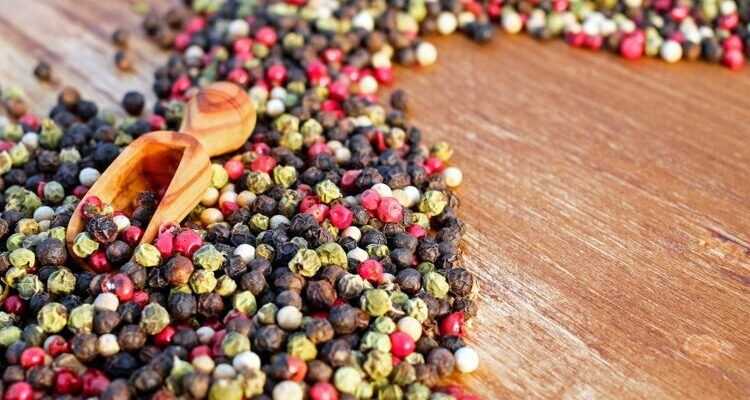Sichuan An Far Eastern air
It is named after the province of central China where the tree that bears it flourishes. And like others, it has been improperly named pepper because it is actually a berry from the rutaceae family, of which citrus fruits are a part. Its fresh and lemony notes have the particularity of creating a double sensation in the mouth: warmth and thrill. Also called "emperor's pepper" in China, it is an essential condiment in Asian cuisine, which goes into the composition of the "five spice" blend, famous with duck. It often enhances bland meats, such as pork and chicken. In Europe, where it has made a strong comeback for the past twenty years, it is more associated with beef and even certain desserts such as chocolate mousse. It is credited with both soothing and aphrodisiac virtues.
Selim A sacred drink

This dried, bean-shaped fruit, long and dark, not very appetizing, is popular throughout West Africa. Quite sweet, Selim's “false pepper” smells of resin first, then coconut in a second. It is perfect for stews. The diar, as it is called in Senegal, is the key ingredient in Touba coffee, which was first consumed during Mouride ceremonies (a brotherhood of Islam) before becoming a national drink. It can be perceived as purifying due to its antimicrobial action.
Cubeb The oriental note

Its peduncle clinging to its grain has earned it its nickname "tail pepper". A product from the Indonesian islands, cubeb is characterized by a touch of bitterness. It occupies a royal place in the gastronomy of the Maghreb, in particular in its blend of spices, ras-el-hanout. It has also established itself in Asia, for making curries. In China, it was supposed to fight respiratory problems.
Pink A tropical color

These pink berries, which come from a tree of the pistachio terebinth family, are considered a pepper because of their flavor. Originally from Brazil, they found fertile ground on the Indian Ocean islands, Réunion and Madagascar. Their powerful floral aromas, a little sweet, are prized by chefs for their dishes of salmon, veal or goat cheese. Miraculous in gastronomy, these berries are also said to be miraculous for our body thanks to their antispasmodic, antiseptic and anti-inflammatory effects.
Cayenne An Andean pepper

It stings a lot, because the Capsicum frutescens des Andes, discovered by the Spaniards in Cayenne, is part of the… chili family! It is a mainstay of Latin American cuisine, especially Tabasco sauce. But it shines as far as Asia. Its active compound, capsaicin, stimulates digestion and blood circulation.
Read also
⋙ Spices: 5 varieties to awaken your taste buds!
⋙ Digestive comfort, anti-inflammatory… 6 good reasons to consume pepper every day
⋙ Pepper, a concentrate of energy!
Article published in the issue Femme Actuelle Jeux Délices n ° 14 December 2020-January 2021
